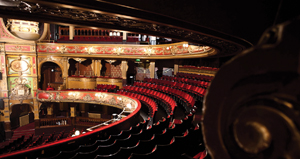Reaching the ‘pick and mix’ audience
Clarie Middleton says achieving diversity needs a holistic approach

If you take a seat in our glorious auditorium here at Hackney Empire you will be surrounded by people from a huge range of backgrounds. Forty percent of our audiences is non-Caucasian, 60% aged between 18 and 45 years old, a large percentage is disabled and at recent shows over 50% was female. Someone described our audience the other day as being ‘pick and mix’ – I was taken aback for a moment, but heh, if the cap fits…
Our approach to diversity is a holistic one – one that offers a unified programme and strategy. If we are going to call ourselves a variety theatre for the twenty-first century then we have to live up to the label. Diversity is at the heart of what we do but we certainly don’t take it for granted. We are often approached to participate in ethnic initiatives such as Black History Month, but have tried as far as possible not to go down this route. Although events like these certainly have their place, we want to celebrate the diverse culture of the Hackney borough all year round and not restrict this to a specific cause. This is not to say that we won’t programme a one-off event that might showcase the talents of a particular ethnic group, but this will be both artist and community led. Every month is Black History Month at the Empire and we hope our audiences feel welcome at any time of the year, not just for their ‘night’ or ‘month’.
From ‘Peppa Pig’ to a gig and live webcast by a trendy pop star to a live recording by the BBC Radio 2 Concert Orchestra, we pride ourselves on attracting a diverse audience in any one week. Who needs those boxes to tick? We believe in the challenge and believe in the work. If the work is rubbish then we are the first to know, no matter who is in the audience. Our approach is simple – we have worked hard to get our audience to trust us. Sometimes, like everyone, we get it wrong and try to learn from our mistakes. We have worked hard to ensure what we present reflects our audiences either in its content, style or casting. We try to present work that they will find interesting, maybe challenging, but most of all entertaining and representative of who they are and where they live. We all have multiple identities and the work needs to reflect this.
Around the work on stage we encourage a culture within the organisation that is inclusive and accessible and then start to reflect this in our staffing, pricing structures, marketing and education work. I’d encourage you and your colleagues to continue to trust and listen to your audiences. It’s a two-way process and sometimes very hard – there are many different ways to engage and you have to be sympathetic (reverential hush in the auditorium is not always de rigueur). But go for it – the rewards are worth it.
Join the Discussion
You must be logged in to post a comment.